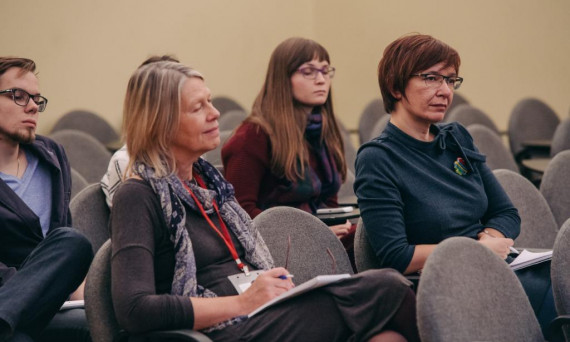Urban STS 1: Politics of Infrastructures
The plenary session – organized as part of the thematic block Urban STS with the panel titled Urban STS1: Politics of Infrastructures will consider the nexus of the political and infrastructural. The materiality of infrastructure has been a topic of great interest in the field of STS, and the embeddedness of political agendas in the design, functioning, and organization of large urban systems remains one of the most important subjects in design, management, and governance. The talks in the plenary will compare the cases of Russian city of Novgorod, understood as the cradle of Russian republican governance, with the politics of road infrastructure in Peru.
The following reports were presented:
Oleg Kharkhordin (EUSP) The Politics of Infrastructure: Some Lessons from 10 years of Research
Penelope Harvey (University of Manchester) Roads to Modernity: an anthropology of infrastructure
Urban STS 2: Humans and Automation
In the recent years, we have witnessed the emergence of myriad initiatives in the domain of smart cities and urban automation, spanning a wide range of infrastructures and becoming the basis of policy recommendations. Most of these visions consider human labor as extraneous, more effectively replaceable by technology, “optimizable” out of the urban technological equation through computation, big data, visualization, and quantitative analysis. Yet are humans merely the users of the future automated environments? Or do they offer a critical component to the functioning of high tech systems, which are missed by the optics offered by data analysis? Our panel focuses precisely on the human element, which tends to fall by the wayside in smart city discourse, where the technological is geared specifically at replacing human functions reduced to their most instrumental roles. We will examine the various functions humans play in the functioning of urban infrastructures, and will consider how the human and the automated infrastructural components are interwoven in an “assemblage” nexus, co-existing, co-functioning, and co-producing each other.
The following reports were presented:
Diana Kurkovsky West (EUSP), Olga Sezneva (EUSP; University of Amsterdam): Conductors and Computers: a case of “live infrastructures” in St. Petersburg and Amsterdam public transport
Olga Bychkova (ЕUSP), Evgenia Popova (PAST Center, Tomsk): Reforming urban infrastructure in Russian cities: Users and utility meters
Oksana Zaporozhets (HSE, Moscow): Metro: sensing the aging of a technology
{gallery}sts/vdnh-10{/gallery}
